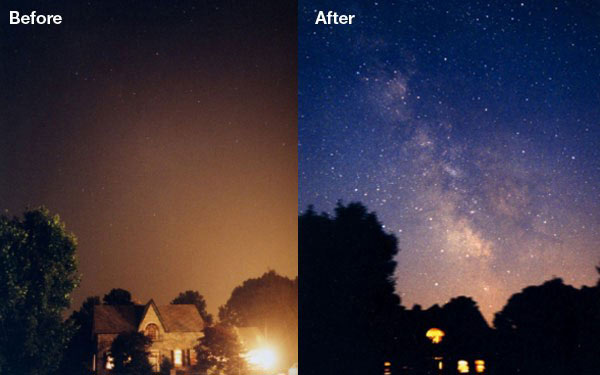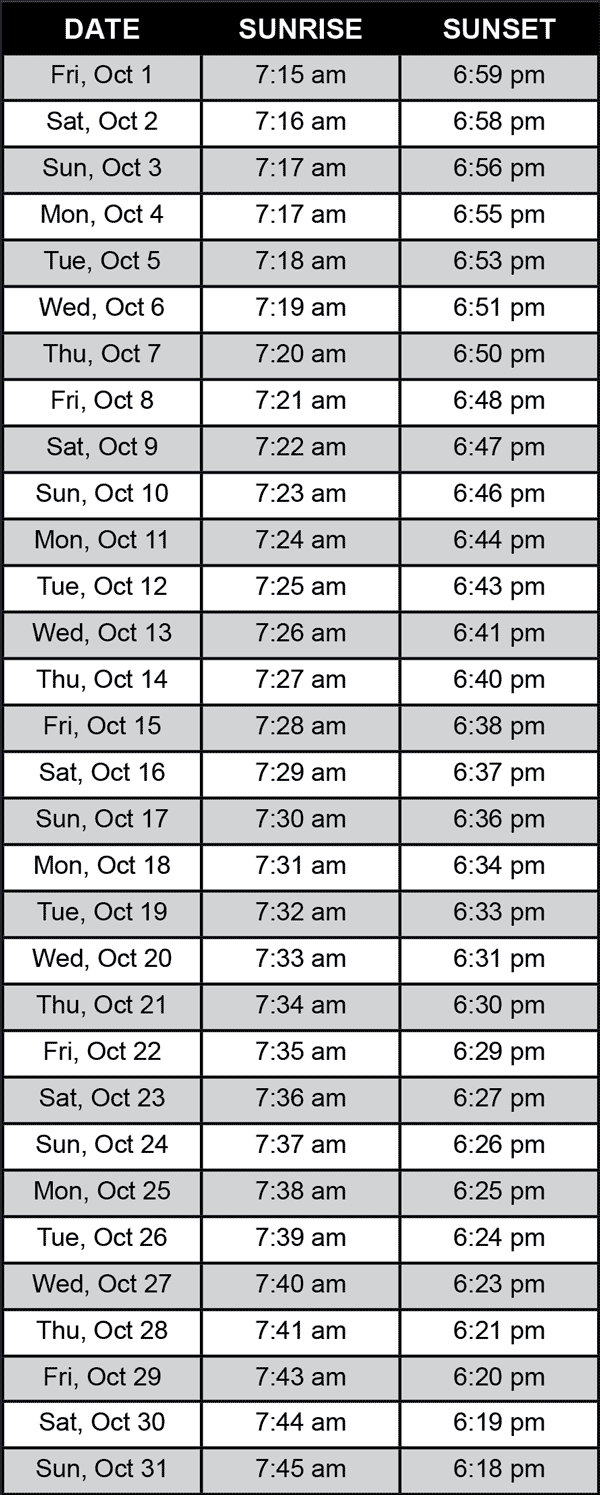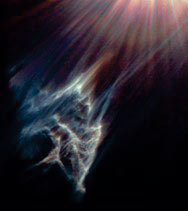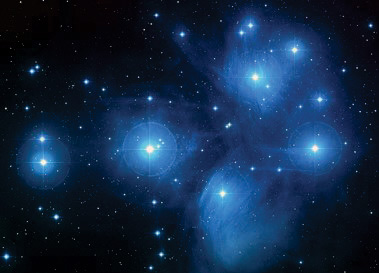Protecting Natural Lightscape
What is Lightscape? The National Park Service uses the term “natural lightscape” to describe resources and values that exist in the absence of artificial light sources at night. Natural lightscapes make nighttime scenery, such as a starry sky, easier to view and are critical for maintaining nocturnal habitat for wildlife. Many species rely on natural patterns of light and dark to cue behaviors, such as navigating the landscape and hiding from predators. Lightscapes have cultural value as well, and they may be integral to the historical character of a location. Light that is undesirable in a natural or cultural landscape is often called “light pollution.” Light pollution is a relatively easy environmental problem to solve. Solutions are immediate and effective, and they often save money. It only takes a bit of knowledge and effort to choose night-sky-friendly outdoor lighting to protect the natural lightscape.
 Use Light Only When You Need It
Use Light Only When You Need It
• Reduce or eliminate the use of landscape lighting and way-finding lighting as appropriate.
• Eliminate lights that do not enhance safety. Sometimes, fewer and lower intensity security lights can actually enhance safety by eliminating dark shadows caused by bright security lights.
• Use motion sensors to turn lights on and off as needed. This costs less money, improves security, and reduces light pollution. Also consider using timers for lights that are needed only in the evening or early morning.
Direct and Shield Your Lights • Make sure the light you are using is directed most efficiently. Try to orient lights downward to protect night sky.
• Shielded fixtures allow no light to shine above the horizon. Several types of full cutoff light fixtures are now available for commercial use. Existing lights can be retrofitted with simple metal shrouds.
• Reduce impacts from interior lighting, as well. Consider awnings, blinds, and shades that can be closed.
Take a Nighttime Tour of Your Property
A good way to find opportunities to improve the natural lightscape on your property is to get outside at night and look for yourself. As you walk around the property, identify places where the ideas described in this fact sheet might be employed.
(The time of sunrise and sunset assumes a flat horizon. Actual time may vary depending upon the landscape.)

Oct 6 - New Moon at 5:05 am
Oct 12 - First Quarter at 9:25 pm
Oct 20 - Full Moon at 8:56 am
Bright Stars and Cold Nights
by Spencer Stokes Dead Horse Point State Park Ranger
Weather changing, skies darkening, and a cool crispness riding on the desert winds invites the season of fall back onto the red rock landscape surrounding Moab. Fall may be the best time of the year to go stargazing and use telescopes to see the wonders of the Heavens. The nights are cooler, which helps clear the air of water and smoke particles, and the sunsets earlier creating more darkness to look up into the stars. On average, there is much less cloud cover during the fall months than in the summer, spring, and winter. With the changing colors of the leaves, many winter constellations and deep space objects reappear in the night sky. One of the most prominent “constellations” and deep space objects that is visible this October are the Pleiades.

The Pleiades have extensive mythology and background. In the western world, they are associated with sailing, because their arrival in the night sky heralded the season of sailing in the Mediterranean sea, so the Ancient Greeks used their word for sailing, Plein, to designate the object. Over time, stories were told by astronomers to create a background for the name of Pleiades. The most well-known mythological story for this star cluster was that Pleione, an Oceanid Nymph, had 7 beautiful daughters with the god Atlas. These 7 sisters would be known as the Pleiades. After Atlas was forced to carry the heavens for all time and eternity, the 7 sisters were transformed into stars by Zeus to comfort their father.

The Pleiades is an open star cluster and is easily one of the most identifiable deep space objects in the night sky. This is due to its proximity to earth and very bright stars that make a beautiful pattern that appears to look like a mini dipper shape, so it is often mistaken for Ursa Minor. Another name for this cluster of stars is The Seven Sisters, which is because 7 of the brightest stars in the Pleiades are visible with the naked eye. It is not an officially designated constellation but is actually a Messier Object. This is because telescopes and other observational instruments reveal the star cluster to contain over 1,000 significant stars. When viewed with large telescopes the cluster is easily seen shrouded in faint clouds, when viewed with binoculars. The cloudiness surrounding the stars is a reflection nebula which are cosmic gases that reflect light from the stars nearby. All of these traits combined make Messier 45, The Pleiades, a wonderful object for backyard astronomy because of its brightness and beauty. So go outside at night, wrap up with warm layers, bring a hot beverage, and look to the northeastern sky and you can not miss the 7 sisters in the sky!